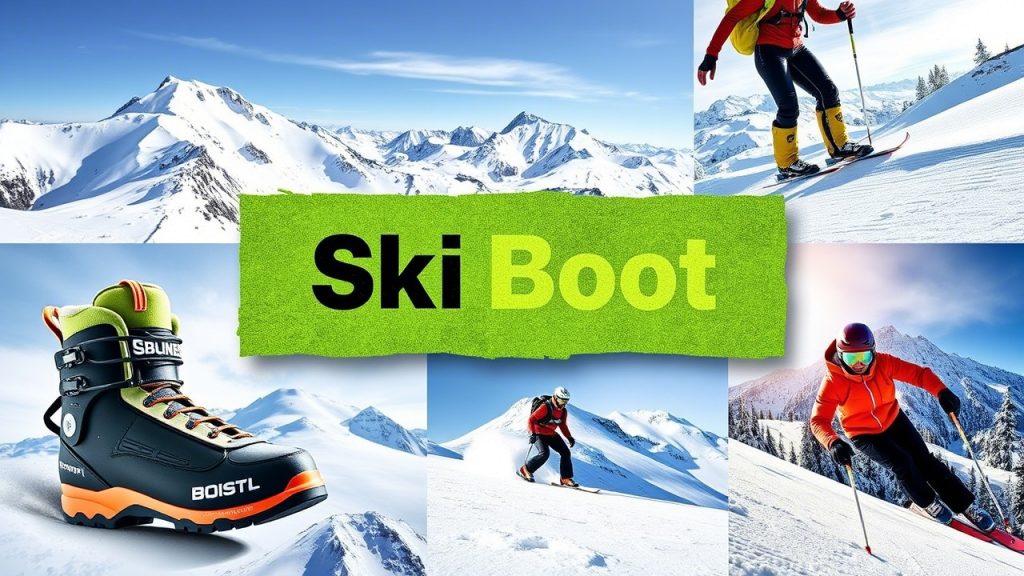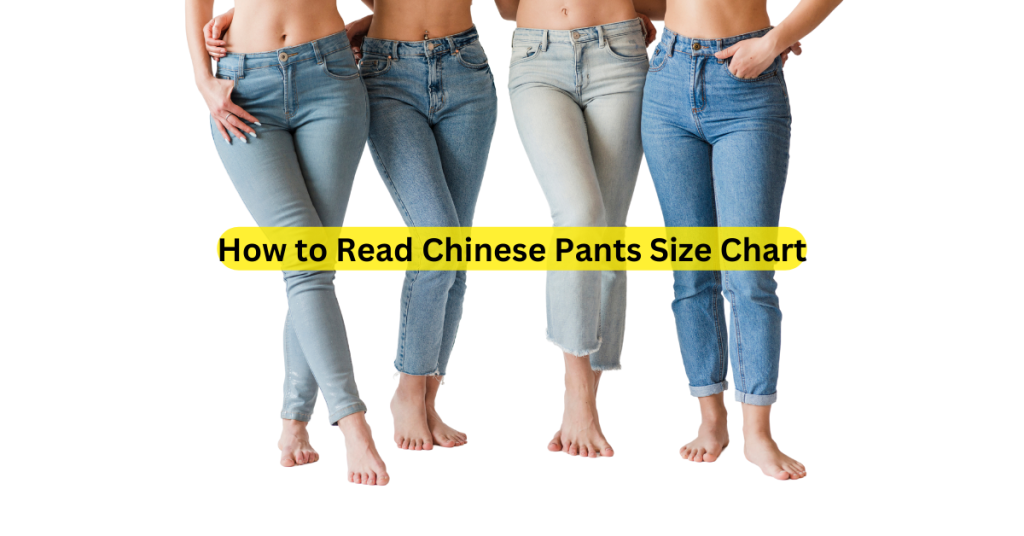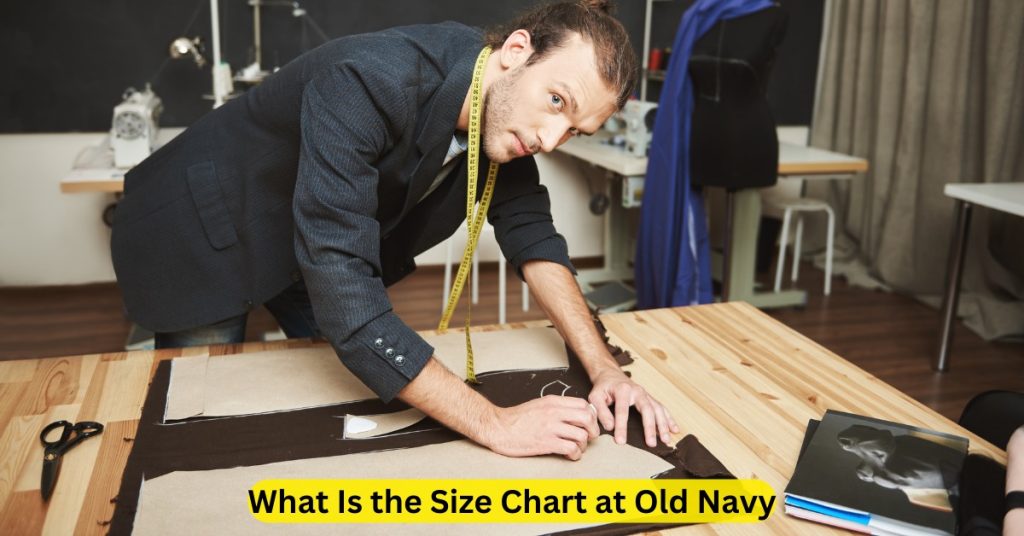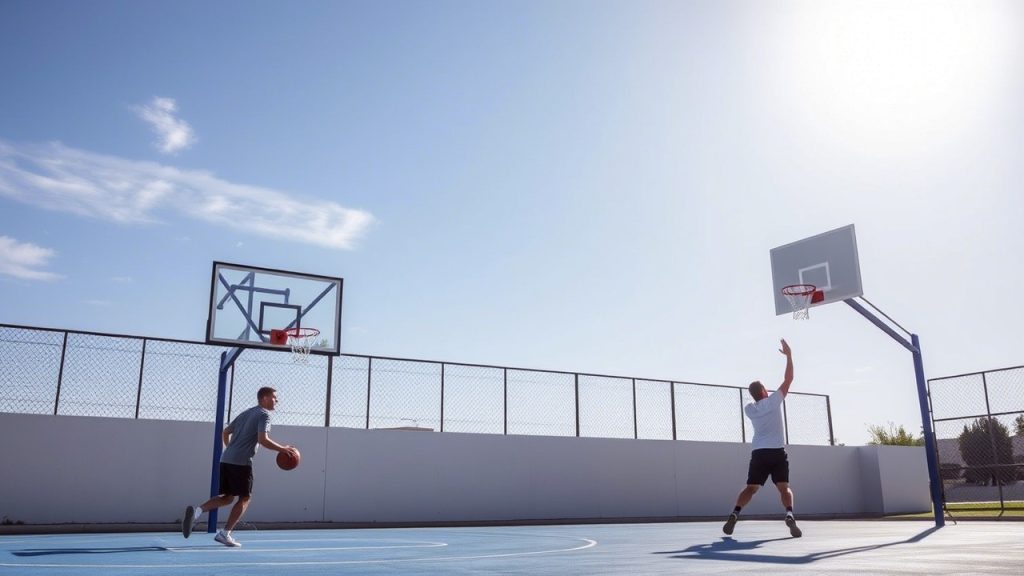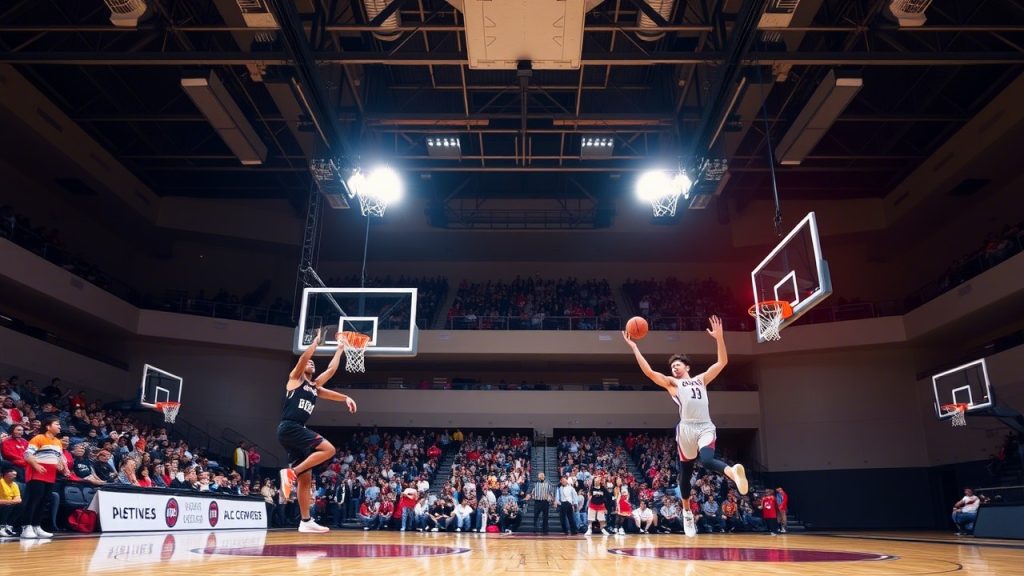30 Best Ski Boot Size Chart Ideas to Achieve the Best Fit
When it comes to skiing, one of the most important pieces of gear is your ski boots. They connect you to your skis, providing control, support, and comfort while navigating the slopes. However, many skiers underestimate the significance of choosing the correct ski boot size. A boot that is too tight or too loose can lead to discomfort, pain, and even injuries, ultimately ruining your skiing experience.
Finding the best-fitting ski boots is essential to ensure that your skiing sessions are enjoyable and pain-free. With so many boot sizing options available, it can be overwhelming to know where to begin. We will explore 30 ski boot size chart ideas to help you achieve the best fit, along with answers to some frequently asked questions about ski boot sizing.
Why Proper Ski Boot Fit is Crucial
Before diving into ski boot sizing charts, it’s important to understand why proper fit is critical for your skiing experience:
- Control and Performance: Ski boots act as a direct connection between you and your skis. A snug fit ensures better control, responsiveness, and power transfer, allowing you to ski with precision and confidence.
- Comfort: Skiing can be physically demanding, and if your boots don’t fit properly, discomfort can quickly set in. Foot pain, blisters, and numbness can quickly spoil the fun of your day on the slopes.
- Injury Prevention: Ill-fitting boots can cause foot fatigue, pressure points, and improper skiing posture, increasing the risk of injuries like sprains or strains.
- Warmth: A good fit not only prevents pain but also helps keep your feet warm. Boots that are too loose or too tight can create discomfort and let cold air in, making you feel cold on the slopes.
Now that you understand the importance of a proper fit, let’s dive into 30 of the best ski boot size chart ideas to help you choose the perfect ski boot for your needs.
30 Best Ski Boot Size Chart Ideas to Achieve the Best Fit
1. Mondo Point Size Chart (International Standard)
The Mondo Point sizing system is the most widely used method for ski boots. It measures the length of your foot in centimeters (cm). This system is used internationally and provides a more accurate measurement than traditional shoe sizing systems.
| Mondo Point Size (cm) | US Men’s Size | US Women’s Size |
|---|---|---|
| 22.0 | 4.0 | 5.0 |
| 23.0 | 5.0 | 6.0 |
| 24.0 | 6.0 | 7.0 |
| 25.0 | 7.0 | 8.0 |
| 26.0 | 8.0 | 9.0 |
| 27.0 | 9.0 | 10.0 |
| 28.0 | 10.0 | 11.0 |
2. US Size to Mondo Point Conversion Chart
If you are familiar with US shoe sizes, this chart will help you convert them to the Mondo Point sizing system.
| US Men’s Size | Mondo Point Size (cm) | US Women’s Size | Mondo Point Size (cm) |
|---|---|---|---|
| 7 | 25.0 | 8 | 25.5 |
| 8 | 26.0 | 9 | 26.5 |
| 9 | 27.0 | 10 | 27.5 |
| 10 | 28.0 | 11 | 28.5 |
| 11 | 29.0 | 12 | 29.5 |
3. European Size to Mondo Point Conversion
Many ski boots are sized using European sizing. If you’re used to EU sizes, use this conversion chart to find your Mondo Point size.
| European Size (EU) | Mondo Point Size (cm) |
|---|---|
| 38 | 24.0 |
| 39 | 25.0 |
| 40 | 26.0 |
| 41 | 27.0 |
| 42 | 28.0 |
| 43 | 29.0 |
4. Foot Width and Ski Boot Fit Chart
Foot width is just as important as foot length when choosing the right ski boot. This chart will help you determine whether you need a narrow, medium, or wide boot.
| Foot Width (mm) | Boot Width Category |
|---|---|
| 98-100 | Narrow |
| 101-103 | Medium |
| 104-106 | Wide |
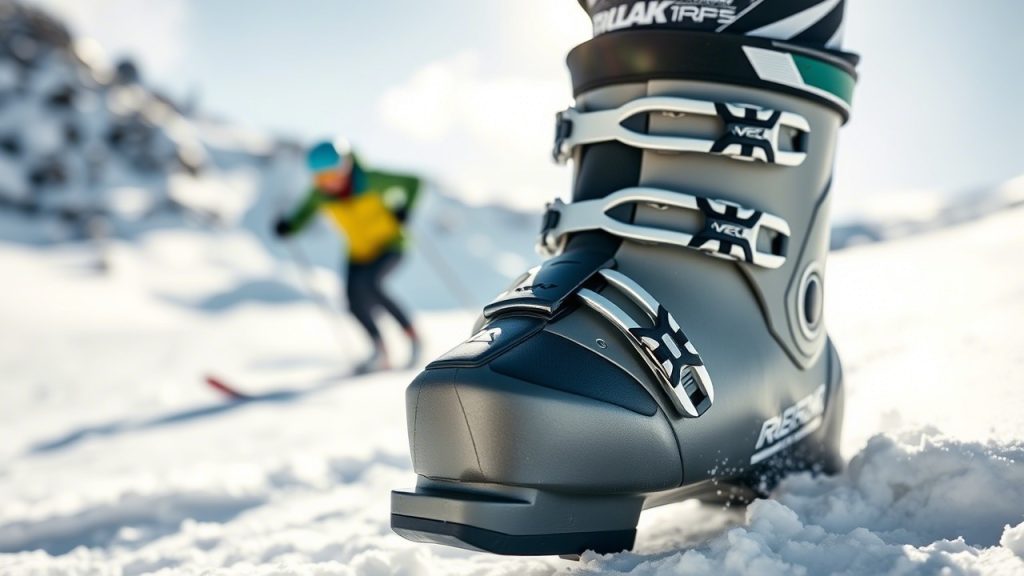
5. Ski Boot Flex Rating Chart
The flex rating of a ski boot determines its stiffness and influences the control you have over your skis. A boot that’s too stiff can be uncomfortable, while one that’s too soft may not provide enough support.
| Ski Boot Flex Rating | Ideal for |
|---|---|
| 50-60 | Beginner skiers |
| 60-80 | Intermediate skiers |
| 80-100 | Advanced skiers |
| 100-120 | Expert skiers |
| 120+ | Professional skiers |
6. Custom Footbed Size Chart
Custom footbeds (also known as insoles) can greatly enhance comfort and support by molding to the shape of your feet. This chart will help you determine the best footbed size for your ski boots.
| Foot Length (cm) | Footbed Size |
|---|---|
| 22.0 | S |
| 24.0 | M |
| 26.0 | L |
| 28.0 | XL |
7. Foot Length and Ski Boot Fit Chart
Proper foot length measurement is crucial for getting the best fit. This chart will help you match the length of your foot to the appropriate Mondo Point size.
| Foot Length (cm) | Mondo Point Size (cm) |
|---|---|
| 23.0 | 23.0 |
| 24.5 | 24.5 |
| 26.0 | 26.0 |
| 27.5 | 27.5 |
| 29.0 | 29.0 |
8. Ski Boot Size Chart for Children
Kids’ ski boots are sized differently than adult boots. Here’s a chart specifically for children’s ski boots.
| Mondo Point Size (cm) | US Kids’ Size |
|---|---|
| 18.0 | 11C |
| 19.0 | 12C |
| 20.0 | 13C |
| 21.0 | 1Y |
| 22.0 | 2Y |
9. Thermoformable Ski Boot Size Chart
Thermoformable ski boots use heat to mold the boot liner to the shape of your foot, providing a custom fit. This chart helps determine if this option is right for you.
10. Ski Boot Fit for Different Foot Shapes
People’s feet come in many shapes. Here’s a chart showing different types of foot shapes and the boots that fit best for each.
| Foot Shape | Recommended Boot Fit |
|---|---|
| High Arches | Stiff boots, good arch support |
| Low Arches | Soft boots, cushioning |
| Wide Feet | Wide boots, extra space |
| Narrow Feet | Narrow boots, snug fit |
11. Ski Boot Size Chart for Women
Women’s ski boots are designed to fit the anatomical differences between men’s and women’s feet, including narrower heels. This chart is tailored to women’s foot shapes.
| Mondo Point Size (cm) | US Women’s Size |
|---|---|
| 22.0 | 5 |
| 23.0 | 6 |
| 24.0 | 7 |
| 25.0 | 8 |
12. Ski Boot Sizing for High Arches
If you have high arches, you may need a boot with good arch support to avoid discomfort. Look for boots with adjustable liners or custom footbeds to accommodate your arch.
13. Ski Boot Sizing for Flat Feet
For skiers with flat feet, you may need a boot with additional cushioning and arch support. This chart will help you find the best ski boots for flat feet.
| Foot Type | Recommended Boot Fit |
|---|---|
| Flat Feet | Medium to soft flex, cushioned insoles |
14. Ski Boot Size Chart for Professional Skiers
Professional skiers often require highly customized boot fittings to ensure maximum performance. If you’re a competitive skier, consider working with a boot fitter to achieve a precise fit.

15. Ski Boot Fit for Older Skiers
Older skiers may need softer boots for more flexibility and comfort. A softer flex rating will help avoid strain on the legs and feet.
| Age Group | Recommended Boot Flex Rating |
|---|---|
| Seniors | Soft flex |
16. Wide Ski Boot Size Chart for Wide Feet
If you have wider feet, you’ll need boots with extra width. Look for boots specifically designed for wide feet.
| Foot Width (mm) | Boot Width Category |
|---|---|
| 104-106 | Wide |
| 106+ | Extra Wide |
17. Boot Length vs. Foot Length Comparison
It’s crucial to choose boots that match the length of your feet. If your boots are too long or short, they won’t provide proper support.
| Foot Length (cm) | Boot Length (cm) |
|---|---|
| 24.0 | 24.5 |
| 26.0 | 26.5 |
| 28.0 | 28.5 |
18. Ski Boot Sizing for Freestyle Skiing
Freestyle skiing requires a boot with more flexibility to accommodate jumps and tricks. Use this chart to find the best freestyle ski boots.
| Skiing Style | Boot Characteristics |
|---|---|
| Freestyle | Soft to medium flex, comfort-focused |
19. Ski Boot Sizing for Alpine Skiing
Alpine skiing demands precise control, so your boots should have a stiffer flex for optimal performance.
| Skiing Style | Boot Characteristics |
|---|---|
| Alpine | Stiff flex, snug fit |
20. Ski Boot Sizing for Backcountry Skiing
Backcountry skiing requires boots that are lightweight and flexible, with a boot that provides support for walking and climbing.
| Skiing Style | Boot Characteristics |
|---|---|
| Backcountry | Medium flex, all-terrain comfort |
21. Adjustable Ski Boot Size Chart
Some ski boots feature adjustable sizing mechanisms that allow you to fine-tune the fit. These boots are especially helpful for skiers whose feet change throughout the season.
22. Ski Boot Size Chart for Men
Men’s feet are generally wider, so men’s ski boots are designed to accommodate a broader foot shape.
| Mondo Point Size (cm) | US Men’s Size |
|---|---|
| 22.0 | 4 |
| 23.0 | 5 |
| 24.0 | 6 |
| 25.0 | 7 |
23. Ski Boot Size for Children with Growing Feet
Children’s feet grow quickly, so it’s important to buy boots with extra room to accommodate their growth over the season.
24. Ski Boot Fit by Activity Level
The type of skiing you do can determine which boots will fit you best. Choose boots that match your activity level.
| Activity Level | Recommended Boot Flex Rating |
|---|---|
| Beginner | Soft flex, comfort-focused |
| Intermediate | Medium flex |
| Advanced | Stiff flex, control-focused |
25. Ski Boot Sizing for Long Days on the Mountain
For skiers who plan to spend long hours on the slopes, comfort and support are paramount. Choose boots that prioritize cushioning and warmth for extended comfort.
26. Ski Boot Fit Based on Skiing Technique
If you’re a more aggressive skier who relies on precision and control, you may need stiffer boots to handle sharp turns and high-speed skiing.
27. Ski Boot Size and Bootliner Types
Bootliners play a significant role in the overall comfort of your ski boots. Choose the right liner to complement your foot shape.
28. Ski Boot Size for Skiers with Narrow Heels
For skiers with narrow heels, you may need a boot that is designed with a narrower heel pocket to prevent heel lift and blisters.
29. Ski Boot Sizing and Custom Fit Services
Many ski shops offer custom fitting services, which include heat-molding boot liners to better match your feet. Consider using this service for the most personalized fit.
30. Ski Boot Size for Extreme Cold Conditions
For extreme cold conditions, look for boots that provide insulation and a waterproof outer layer. The right boot can help keep your feet warm and dry all day long.
Frequently Asked Questions
- How do I know if my ski boots fit properly? A proper fit should feel snug but not tight. You should have minimal movement in the boot, and your toes should lightly touch the front of the boot but not be squished.
- What should I do if my ski boots feel too tight? If your boots feel too tight, consider getting custom footbeds or visiting a boot fitter to adjust the boots to your specific foot shape.
- Can ski boots be too loose? Yes, boots that are too loose can cause discomfort, reduce control, and lead to blisters. They should fit snugly without being overly tight.
- How important is the flex rating of ski boots? The flex rating affects how stiff the boot is, which influences your ability to control your skis. Softer flex is better for beginners, while stiffer flex is ideal for advanced skiers.
- What is the Mondo Point sizing system? Mondo Point is a ski boot sizing system that measures the length of your foot in centimeters, providing a more accurate fit than traditional shoe sizing.
- Should I buy ski boots based on my regular shoe size? While you can start with your shoe size, ski boots often fit differently due to their design and the need for extra support. Use a dedicated ski boot size chart for best results.
- Can I use custom footbeds in any ski boot? Yes, custom footbeds can be used in most ski boots. They help improve comfort and support, especially if you have unique foot issues like high arches or flat feet.
- What’s the best way to measure my feet for ski boots? Stand on a piece of paper with your heels against a wall. Measure the distance from your heel to the tip of your longest toe. This gives you the foot length in centimeters.
- Can I use the same ski boots for different types of skiing? While it’s possible to use the same boots for different types of skiing, you’ll get better performance and comfort if you choose boots specifically designed for your skiing style (e.g., alpine, freestyle, backcountry).
Conclusion
Choosing the right ski boot size is essential for a comfortable and enjoyable skiing experience. A properly fitting ski boot not only provides the support and control needed to navigate the slopes confidently but also ensures that your feet remain comfortable and protected throughout the day. Whether you’re a beginner, an intermediate skier, or a seasoned pro, the right boot can make a world of difference in your overall performance and enjoyment on the mountain.
From understanding the Mondo Point sizing system to considering foot width, flex rating, and activity level, there are numerous factors that contribute to finding the perfect ski boot fit. The 30 ski boot size chart ideas outlined in this blog post offer a comprehensive guide to help you make an informed decision based on your individual needs and preferences.
Remember, ski boots are not a one-size-fits-all item. Everyone’s feet are different, and it may take some trial and error, along with professional fittings, to find the ideal pair. Don’t hesitate to consult with a boot fitter or try on several pairs to ensure you’re getting the best fit possible. After all, a ski boot that fits well will not only enhance your comfort and performance but also protect you from unnecessary pain and injuries, allowing you to enjoy every moment on the slopes.
With the right ski boot size and fit, you can focus on what truly matters – having fun on the mountain. So, get out there, find the perfect ski boot, and hit the slopes with confidence!

